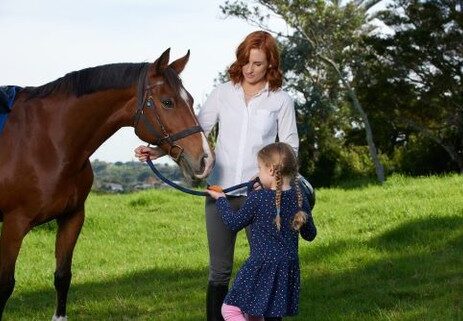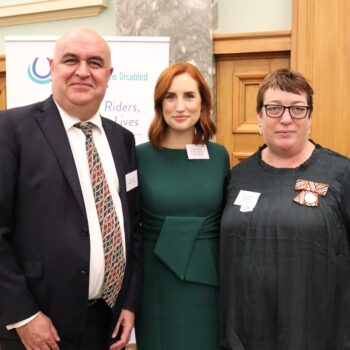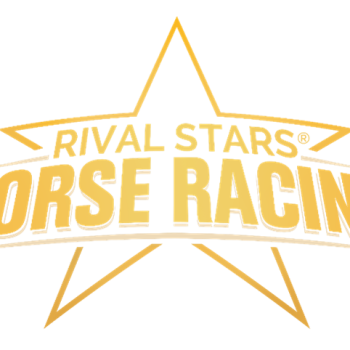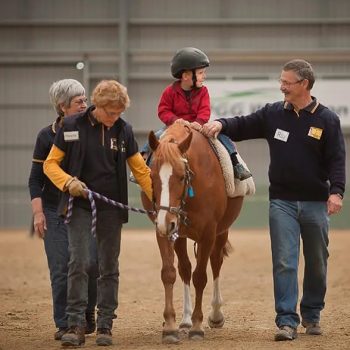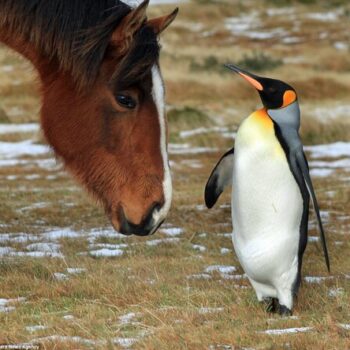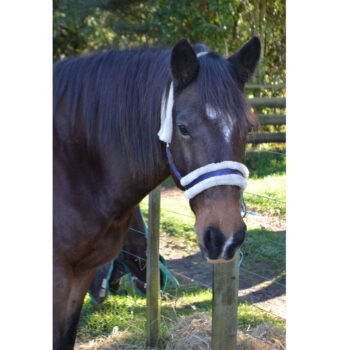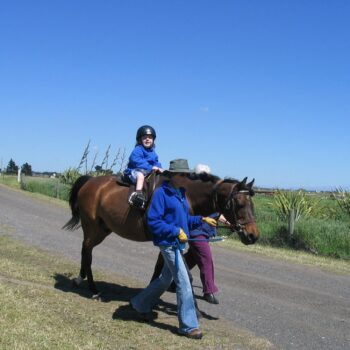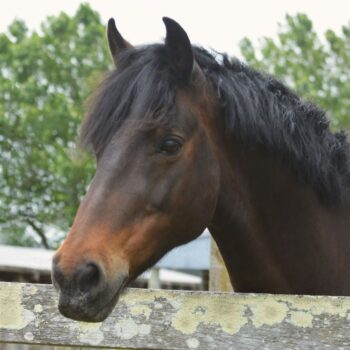Sam Hayes: Dancing for good
Dancing with the Stars winner Samantha Hayes explains how she reconnected with her horsey roots through Riding for the Disabled, her chosen charity for the show.
This story was originally published on www.horseandponymag.com and is republished with permission.
By Helen Firth, July 3 2018
When Newshub anchor Samantha Hayes was asked to do Dancing with the Stars, her initial reaction was ‘no way’. The former keen equestrian had zero dancing experience, but was swayed by the opportunity to help her chosen charity, the New Zealand Riding for the Disabled Association (NZRDA).
She wanted to do something that would help children, and with her strong riding background, the RDA resonated strongly. She’s enjoyed spending time at the Auckland Central RDA in Meadowbank recently, seeing the operation first-hand.
“I felt really emotional and overwhelmed by the work they do – they are making a huge difference in these kids’ lives,” she says. “To meet some of the children was so inspirational. If these wee girls can overcome the challenges in their life, then I can get out there and do my best dancing for them.”
Up close, Sam is every inch her dance persona ‘GlamSam’. But she’s also warm and approachable, and when she starts talking about her idyllic childhood in South Otago, her love of horses shines through. These days, with a busy TV career, Sam only gets to ride infrequently, when she goes home to the farm, but it’s a part of her life she clearly misses.
“It was actually my New Year’s resolution, to try and get more involved with horses and back into riding,” she says. “I don’t think it’s going to be possible for me to own and look after a horse at the moment because it is such a big responsibility, but what I definitely will be able to do is volunteer at Riding for the Disabled. Now Dancing with the Stars has wrapped up, I’m going to head out to Meadowbank at least once a fortnight, because the work they do is phenomenal and I’d love to be involved with it.”
The early years
Sam (34) was born in South Africa, and moved to Milton in South Otago with her parents, Sheena and Paul, when she was a toddler. Her aunt and uncle, Sonia and Ross Lyders, had a 1600-acre sheep and cattle farm in nearby Waitahuna; Sonia ran a riding school, and Sam was first popped on a pony when she was about six.
“I just loved it, and you couldn’t keep me away from the place from that moment onwards – every school holidays and every weekend I would be up at the farm with my aunty getting the horses ready and teaching kids to ride. We’d do lessons in the morning and then we’d head out on a big ride around the farm every afternoon,” she says.
“Soni is an incredible riding instructor and has taught countless children to ride; she’s my second mum and I’m so lucky to have her in my life.”
Sam learned to ride the old-fashioned Kiwi way; up hills, down valleys and over the various logs her uncle had placed around the farm for jumps. “I spent most of my life riding always right on the edge of my comfort zone,” she confesses. “At times I was so frightened I’d think, I can’t do this, but because I was surrounded by bigger kids early on, I would give it a go.”
When Sam was able to put a bridle on by herself, she was allowed to keep a pony in Milton, grazing in paddocks belonging to various family friends around the area. She had a string of ponies and horses loaned by her aunt over the years; her first was the English Riding Pony Glen Cree Ballerina, and she was followed by Danny Boy, High Jinx, Jemima, Calypso, Pepsi, Zac, Dawn and Leonardo.
“I would ride my bike off to the paddock– nothing made me as happy as pottering about with my pony for hours at a time. The local farmers were fine with me riding through their farms as long as I shut the gates,” she recalls. “I was only nine or 10, but I remember it vividly. I had no fear and the one and only rule was that I had to be back before dark.”
Naturally, Sam was a big fan of NZ Horse & Pony magazine. “Oh yes! It’s like my 13-year-old self’s dream to be in the magazine – it’s so exciting,” she laughs.
A committed competitor
Sam attended Milton Pony Club and South Otago Pony Club, competing at the show jumping champs and Springston Trophy on her thoroughbred-cross Leonardo. She loved eventing, cross-country in particular.
“I thought cross-country was the most fun you could have, and I was also really into doing flatwork, because obviously that made everything else better. I had a couple of ponies that were really good wee show jumpers as well, so I just put my hand up for anything and if there was space on the team, I’d be there,” she says.
I’m a little bit nerdy and I would clean my gear every time I rode. If I went to pony club and I got some feedback about my horse not being appropriately turned out, I’d take that to heart. I was very committed and passionate about doing my best.
Sam’s tenacity, which has obviously served her well in her career, is probably illustrated best when she recounts falling off Leo on the cross-country at a 95cm level one-day event.
“I must have been about 15, and we’d come first in the dressage and gone clear in the show jumping, so all I had to do was get around this cross-country,” she explains. “It had rained heavily and Leo used to hate the water jump, so I knew that was going to be tricky. We were clear and the water was right near the end of the course, but when we came around the side of the hill, his feet on the wet grass just went out from underneath him and he crushed my foot into the side of the hill. I came off, but because we weren’t near any jumps there were no penalties, so I hopped back on. I couldn’t put any weight on my foot, so I whipped my stirrup over the front of my saddle and off we went down to the water complex with one stirrup. We were almost home, so I wound him up and we got through there and went cantering through the finish flags.”
Sam thinks she won the event, but can’t be sure as she didn’t stick around for the prize-giving, instead heading straight to Balclutha Hospital. Luckily, her foot wasn’t broken, but Sam does remember being disappointed that the St John staff had to cut her out of her of her brand new riding boots!
Sam stopped riding daily when she was about 17 and moved to Dunedin to study journalism. “I sold Leo. It’s so sad isn’t it? Watching them leave on the float, it’s heart-breaking.”
Down to earth
Sam’s rural background has given her a real connection with the land and has definitely influenced her reporting on current affairs.
“I hope that, despite living in Auckland and spending a lot of time getting my hair and make-up done and dressing up for my job, that my upbringing is keeping me grounded,” she says.
“Often when there is a story that is a little bit Auckland-centric – maybe Auckland has a big storm and the power has been out for a wee while – I think about how my farming friends down in South Otago would react to a similar situation. I like to think about our news through that lens and it does often change my perspective on things a little bit.
“Obviously, growing up with horses teaches you about discipline and responsibility and love, because you just love that horse so much. There aren’t any days off: you can’t decide, ‘oh I’m a bit tired,’ because you need to make sure they are fed and they’ve the right covers on. For a teenager, that’s a big responsibility, and I think a really good one to have.”
Learning to dance
Fans of Dancing with the Stars may have noticed how Sam incorporated equestrian lingo into her dance rehearsals – on the first episode she could be heard referring to ‘dressage’. She explains that it helps her remember her posture while she’s dancing.
“Like a lot of people who sit in front of a computer a lot, I do have a tendency to hunch my shoulders. But dressage gives you really good posture – you engage your core and your shoulders are back and down,” she explains.
“My dance partner, Aaron, has his own dance language that I don’t understand, so when he was using all these terms and none of it made sense to me, I renamed them. He picked up on it really quickly, and started to shout ‘dressage’ at me – which means shoulders back and standing up straight. He’s an amazing teacher in that he can incorporate my way of learning into his way of teaching, seamlessly.”
Sam’s initial reaction to being approached for the show was an outright no – she knew the show was full on and that it would be hard without some natural inclination towards the steps. She’d had a few modern dance lessons at school, but it really wasn’t her thing. “I did it for about five minutes and then when back to riding horses and playing netball.”
However, after a bit more consideration she took a couple of dance classes and discovered she actually enjoyed it. “I thought, what the hell! I love a challenge and it’s for a good cause, so why not?
“Aaron and I threw everything we possibly could into it, because we wanted to stay in the competition for Riding for the Disabled.”
Horses as therapy
For Sam, it’s easy to understand how horses can change the life of a disabled child. “Horses are incredibly empathetic. They don’t judge you,” she says. “For a child who is non-verbal and does not communicate, even with their own family, they can talk to their horse. They take astronomical steps forward with their development.”
The riding acts as physiotherapy, and also helps psychologically and socially.
“I spoke to a mother the other day who said that having a severely disabled child can be really isolating for a family, so having that love and support from the RDA community makes a huge difference,” explains Sam.
“At the RDA, I met a wee girl called Pippa, who has spina bifida. Pippa is seven and she has braces on her legs, but she’s an incredible rider; she’s riding by herself off the lead-rein and she can make her pony halt and walk and trot on. I couldn’t ride like that when I was her age! And what the riding is actually helping with is the alignment of her spine and her hips and legs, in a way that physiotherapy could possibly do, but it might take a bit longer or be a bit more painful. So all this is happening while she gets to do something she loves.”
Currently, the NZRDA work with about 3000 children every week and they want to double that number in the next few years, says Sam. “If I can help them do that, I will be over the moon.”
A second mother
When Sam goes to the South Island, the farm is the first place she heads, to go for a ride with Sonia, who is now 72 but still has three horses and rides regularly.
Sonia describes Sam as the daughter she never had, and is terrifically proud of her talented niece. “Sam spent a lot of time on the farm and was such a big help, as in the holidays I would have up to 10 children come and stay for camps. Sam was very good with the kids – you never heard her raise her voice – and they always looked up to her. She’s also brilliant with animals.
“I’ve heard Sam say she was quite scared when she was riding, yet it never looked like that to me; she rode beautifully and appeared totally capable and in control. Her horses were turned out immaculately and she did it all herself. Sam worked hard and had to earn money for her entry fees and feed – it wasn’t handed to her on a plate.”
NZRDA at a glance
- Riding for the Disabled has over 50 member groups throughout New Zealand.
- There are 3,000 RDA riders, 1,700 volunteers and 450 horses.
- Most of the riders are children or teens. 35% have a physical or intellectual disability, while just over a quarter are on the autistic spectrum.
- Horses are used as ‘four-legged therapists’, increasing the ability, independence and self-confidence of their riders.
- A good RDA horse is hard to find. They are usually at least seven years of age and have to be calm, fit, friendly and spook-proof with a strong back and even paces.
————————————————————
This article was first published in the June/July 2018 issue of NZ Horse & Pony magazine, available in all good bookstores and wherever great magazines are sold.
To subscribe, visit the Horse and Pony website.

